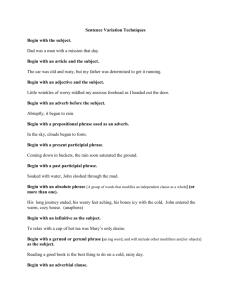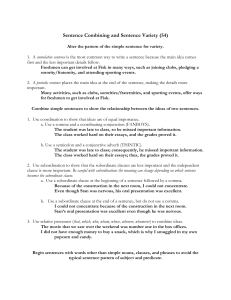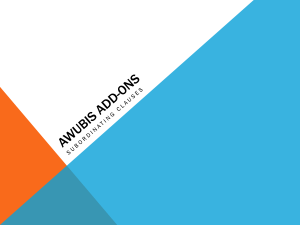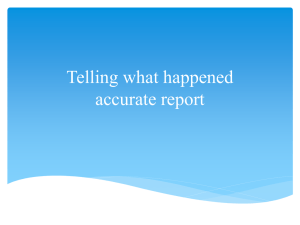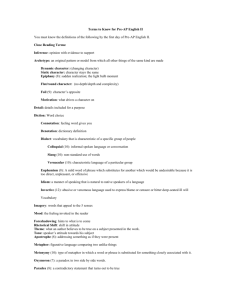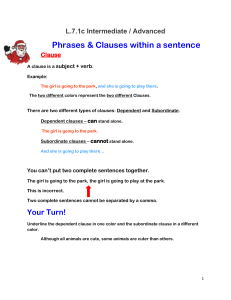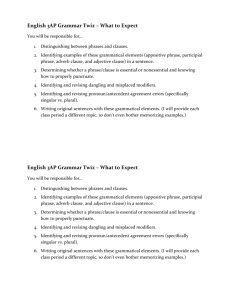Editing Checklist
advertisement
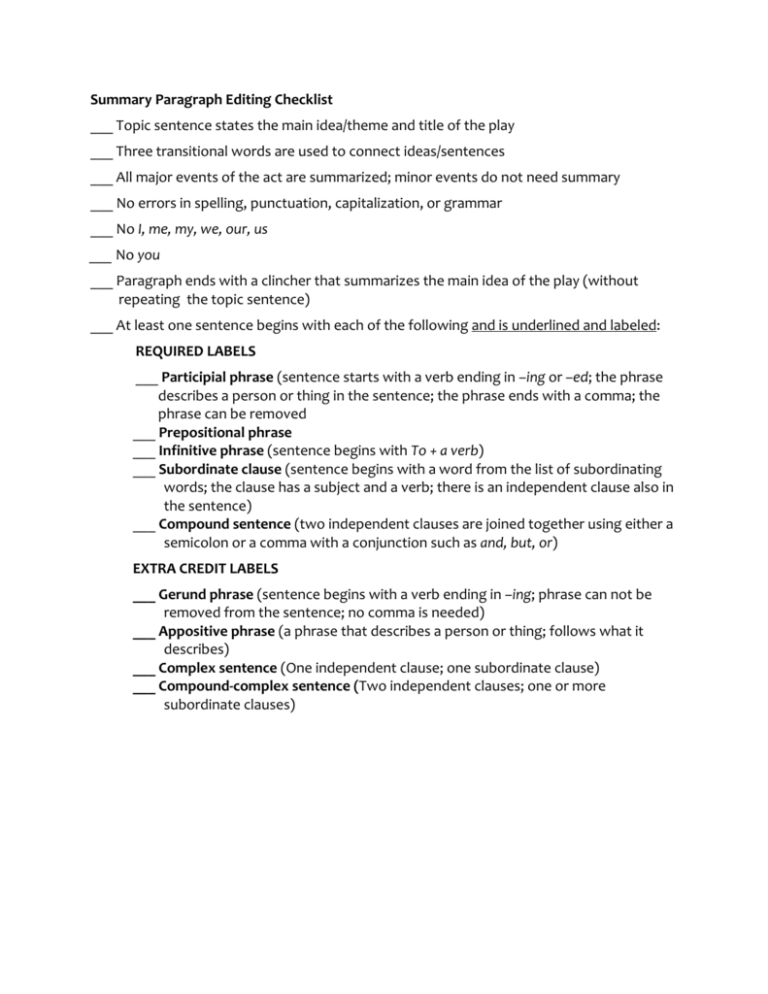
Summary Paragraph Editing Checklist ___ Topic sentence states the main idea/theme and title of the play ___ Three transitional words are used to connect ideas/sentences ___ All major events of the act are summarized; minor events do not need summary ___ No errors in spelling, punctuation, capitalization, or grammar ___ No I, me, my, we, our, us ___ No you ___ Paragraph ends with a clincher that summarizes the main idea of the play (without repeating the topic sentence) ___ At least one sentence begins with each of the following and is underlined and labeled: REQUIRED LABELS ___ Participial phrase (sentence starts with a verb ending in –ing or –ed; the phrase describes a person or thing in the sentence; the phrase ends with a comma; the phrase can be removed ___ Prepositional phrase ___ Infinitive phrase (sentence begins with To + a verb) ___ Subordinate clause (sentence begins with a word from the list of subordinating words; the clause has a subject and a verb; there is an independent clause also in the sentence) ___ Compound sentence (two independent clauses are joined together using either a semicolon or a comma with a conjunction such as and, but, or) EXTRA CREDIT LABELS ___ Gerund phrase (sentence begins with a verb ending in –ing; phrase can not be removed from the sentence; no comma is needed) ___ Appositive phrase (a phrase that describes a person or thing; follows what it describes) ___ Complex sentence (One independent clause; one subordinate clause) ___ Compound-complex sentence (Two independent clauses; one or more subordinate clauses)

